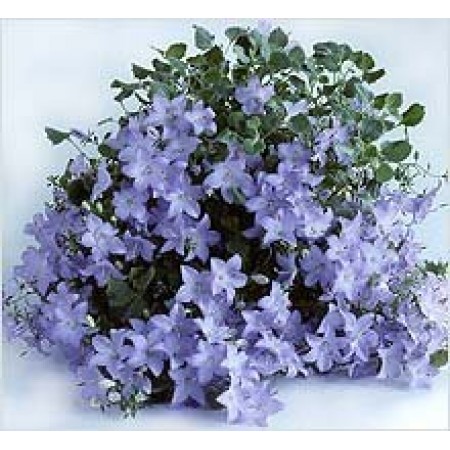Growing Campanula at Home

Campanula recently appears more and more often in apartments and private houses of gardeners, who prefer the cultivation of exotic plants. Its popularity is due to its original appearance - the flower shoots, from which purple and white buds can bloom. How to properly care for him? In this we will try to understand the submitted material.
Choosing the right place
If the plant does not bloom or has a minimum number of buds, then this indicates insufficient lighting in the room. The optimal place for a pot with a campanula would be a windowsill, where there is an abundance of scattered sunlight. Western and eastern windows are ideal for this, but make sure that the plant is not affected by direct rays, otherwise burns will quickly appear on the leaves.
However, remember that when you turn on central heating in the winter, it is best to remove the campanula pot from the windowsill located above the batteries or radiators. A flower loves warmth, but its overabundance will reduce the likelihood of flowering and the leaves of this representative of the flora will begin to curl and wither.
Temperature and humidity
Moving smoothly to the air temperature indicator, it can be argued that in the summer the optimal value is the thermometer indicator at a mark of +20 to +25 degrees Celsius. In winter, the Campanula gains strength before the next flowering period, and at this time it is better to maintain the temperature in the room no higher than 15 degrees Celsius.
Humidity does not play much - Campanula feels great in a room with high and low humidity. If you want to quickly achieve a positive result in flowering, then maintaining an average moisture content of 50-60% will be an excellent solution and will positively affect the life of your pet.
The required amount of watering
The more often the campanula receives fluid, the better. In summer, it is recommended to moisten the soil in the pot at least twice a day (morning and evening), and in winter the number of water procedures can be halved. Additional spraying of the flower's leaves in the summer will not be superfluous - this ensures that the flower receives enough moisture, and dust and small dirt particles are constantly removed from its leaves.
For irrigation, it is best to use water at room temperature, which was previously settled for 24 hours. The harsh liquid flowing from the taps in our apartments and cottages is not very suitable for this, since the content of various impurities adversely affects the living organism of the plant. If you do not follow the stiffness indicator, then your flower will become ill, having lost all the leaves and having lost its former saturated color.